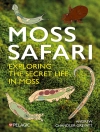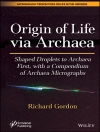This volume addresses the similarities and also the differences in the genomes of soil saprophytes, symbionts, and plant pathogens by using examples of fungal species to illustrate particular principles. It analyzes how the specific interactions with the hosts and the influence of the environment may have shaped genome evolution. The relevance of fungal genetic research and biotechnological applications is shown for areas such as plant pathogenesis, biomass degradation, litter decomposition, nitrogen assimilation, antibiotic production, mycoparasitism, energy, ecology, and also for soil fungi turning to human pathogens.
In addition to the model organisms Neurospora and Aspergillus, the following species are covered providing a view of pathogens and mutualists: Trichoderma, Fusarium oxysporum, Cochliobolus heterostrophus, Penicillium chrysogenum, Rhizopus oryzae, Podospora anserina, and species belonging to Agaricomycetes, Archaeorhizomycetes and Magnaporthaceae. Ecology and potential applications have guided the choice of fungal genes to be studied and it will be fascinating to follow the trends of future sequencing projects.
Table des matières
Genomic contributions to the study of soil and plant-interacting fungi.- Fungal genomics for energy and environment.- Advancement of functional genomics of a model species of Neurospora and its use for ecological genomics of soil fungi.- Major Plant Pathogens of the Magnaporthaceae Family.- Aspergillus – Genomics of a cosmopolitan fungus.- Trichoderma – genomic aspects of mycoparasitism and biomass degradation.- Fusarium oxysporum: A ‘moving’ view of pathogenicity.- Genomics and spectroscopy provide novel insights into the mechanisms of litter decomposition and nitrogen assimilation by ectomycorrhizal fungi.- Cochliobolus heterostrophus, a Dothideomycete pathogen of maize.- Penicillum chrysogenum – the genomics of antibiotics production.- Rhizopus oryzae – genetic secrets of an emerging human pathogen.- Podospora anserina: from laboratory to biotechnology.- Recent advances on the genomics of litter- and soil-inhabiting Agaricomycetes.- Archaeorhizomycetes, patterns of distribution and abundance in soil.- Methods in Fungal Genetics.












